The members of the Design Research Institute (dri), based on Chiba University’s only campus in Tokyo, the Sumida Satellite Campus, primarily consist of researchers in the design field of engineering. However, the institute also includes educators from other disciplines and individuals who are active as designers outside the university. We interviewed Professor Akira Ueda, director of dri, to learn about the underlying philosophy and its intended goals.
From forefront designers to researchers in preventive medicine

――I learned that professors with diverse specialties are participating in dri. Some of these professors are also actively engaged as designers at the forefront.
The dri employs a cross-appointment system, allowing practitioners from the forefront of the Japanese design world to participate as specially appointed professors. These include Professor Kota Nezu, who gained independence after working in design at Toyota Motor Corporation; Professor Kaoru Fujimoto, who is active in architectural design; and Professor Hidehiko Miura, a product designer. This involvement enhances the institute’s connection to practical design work in Japan.
The opportunity for students to directly hear real-life narratives from individuals actively working as designers, such as insights on forming teams for major design competitions, and to ask an array of questions, is truly invaluable. Don’t you think this environment is quite a luxury?


――Are designers and professors with primary roles outside dri involved, typically leading one or two sessions a week?
There are many professors like that, but the specially appointed professors I introduced earlier are not involved on a per-session basis; instead, they dedicate a full day within the week to focus on education and research at dri. Despite the fact that many designers are based in Tokyo, having a campus in the city lowered the barriers to inviting them to Chiba University, which was fortunate.
――Are the professors engaged in dri’s education and research mostly from the engineering field?
Although full-time faculty members, myself included, are part of the Chiba University Graduate School of Engineering and manage education and research in the design course. However, dri was established with the objective of integrating design education and research across various fields, not just limited to engineering. Members include researchers from the Center for Preventive Medicine Sciences. Moreover, researchers from areas beyond design within the Faculty of Engineering, such as architecture and urban environments, are part of the institute.

――I think that landscape research is closely related to design research, but the combination of ‘preventive medicine and design’ is quite unexpected
Actually, Associate Professor Masamichi Hanazato from the Center for Preventive Medicine Sciences has a background in architecture. Through research that designs cities and spaces based on evidence obtained from medical research, we are pioneering a new field of “medicine + design.”
Chiba University’s design research has a longstanding tradition of seeking ‘Cross-fertilization.’ The notion is that design is not an isolated field, but rather one that deepens and expands by intersecting with various other domains. Our university’s history in design education and research spans over 100 years, and I believe that this tradition is well represented in this diverse lineup.
Design education and research with a history spanning over 100 years at Chiba University

――When you say 100 years, do you mean before the founding of Chiba University (1949)?
Indeed, Chiba University’s design education and research has its roots in the ‘Tokyo Higher School of Arts & Technology’ established in 1921. The Tokyo Higher School of Arts & Technology has the longest history in Japan as an institute for engineering design education and research. Originally located in Tokyo, the school underwent various transformations, including relocating to Matsudo in Chiba due to war damage, ultimately evolving into the Chiba University’s Faculty of Engineering. Over time, the university expanded to encompass various fields of engineering.
Given the opportunity to establish a base in Tokyo, akin to a return to its origins, the university aims to embrace innovative cross-fertilization that arises from this newfound platform. In addition to welcoming experienced designers as instructors, we are committed to spearheading collaborative endeavors with private companies.
As discussed previously, one of these initiatives is the development of a mobile partition in collaboration with office furniture manufacturer Itoki Corporation. They remain engaged in joint research with dri, maintaining a presence within our campus.
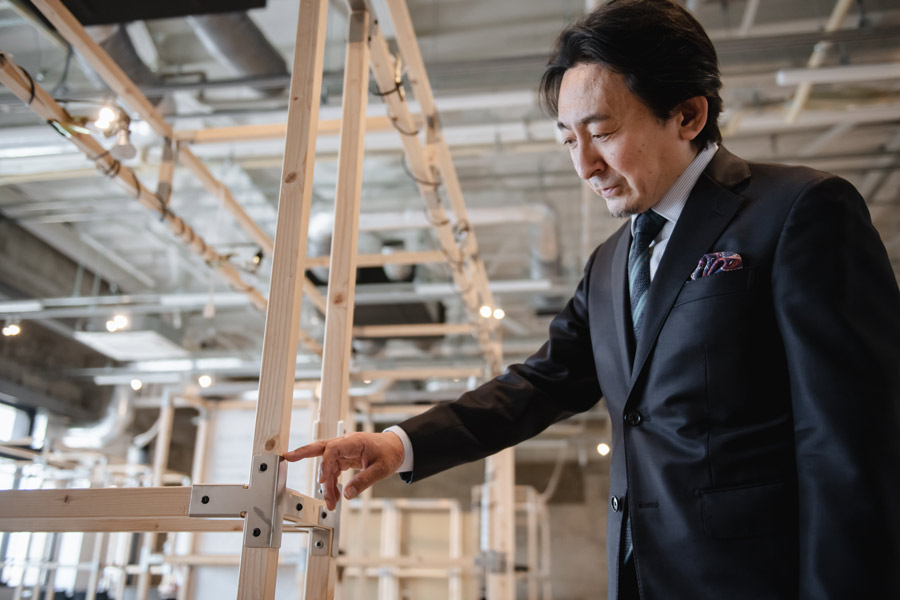
In addition, Yamaha Corporation and Yamaha Motor Co., Ltd. have embarked on collaborative research involving musical instrument design and motorcycle design. This provides aspiring designers among the student body with a valuable opportunity to engage directly with developers from these companies while still in their student years.
The design project aimed at promoting tourism through bus utilization in Sumida Ward
Design is often misconceived as merely involving creating patterns and enhancing aesthetics. However, design encompasses more than that―it is an endeavor that enhances human life, and design research serves as a ‘practical science’ for this purpose.
While free and flexible thinking are undoubtedly important, they alone are insufficient. I believe that one of the significant roles of design is to identify societal issues and discover ways to address them.
Therefore, regarding the Sumida Ward as our ‘field,’ it is crucial for both design researchers and students to identify local challenges and brainstorm potential solutions.
For example, in the academic year 2021, to encourage tourists to utilize on-demand buses operating within the city, we contemplated proposing a wrapping design that would be more easily recognizable, along with signage designs for boarding and alighting stations.

However, due to the coronavirus crisis, there were limitations to what we could achieve while involving people within society. I believe the true test lies ahead.
Design to record and utilize buried culture

――Please tell us about your own research
I mentioned that there is a tradition of “cross-fertilization” in design research at Chiba University, but my research combines design and cultural anthropology.
The name of the laboratory is ‘Cultural Design Planning Laboratory.’ In this context, ‘culture’ does not refer to ‘novelties’ or ‘arts and entertainment,’ but rather to ‘the way of life and innovative adaptations of people that have been shaped while being influenced by factors such as geographical features and climate of the land.’ Research involves understanding such cultures, unearthing elements that are at risk of being forgotten, and proposing solutions to challenges.
While I haven’t yet achieved concrete research outcomes within Sumida Ward, I have a project that I’d like to introduce. This project is related to ‘Maiwai,’ a tradition passed down in fishing villages in Chiba Prefecture.
Maiwai refers to garments crafted at the end of years with abundant catches. Ship owners and fishing leaders would create dyed fabrics with unique patterns and distribute them to the homes of fishermen, who would then tailor the garments themselves. This tradition boasts a 200-year history. However, sadly, only a few workshops remain capable of producing these dyed fabrics today. Maiwai has become so rare that it is preserved in museums and art galleries, much like a cultural heritage.
Therefore, I borrowed the pattern paper used for the dyeing Maiwai, photographed it, converted it into two-dimensional data, recorded and preserved this precious cultural heritage, and proposed designs for product packaging and stationery utilizing the patterns. Additionally, I provided support to the creators of ‘Maiwai’ by supplying paper patterns created from digital data. My research focuses on the practice of observing, recording, preserving, and utilizing such ways of life.

From left: shopping bag, chopstick pouch, and clear file.
Upon seeing the Maiwai products showcased in museum shops, local residents experienced a sense of nostalgia and came to realize, “Our town holds such treasures, even in places we believed were devoid of them.” I’ve encountered such anecdotes. While the use of Maiwai may not bring significant economic benefits, I believe it has contributed to the emotional richness of attachment to one’s place of residence and the revitalization of the region.
――You can clearly see the breadth of ‘what design can do.’
Absolutely. Students who join dri can attend classes offered by faculty members actively engaged in various educational and research activities. They also have the opportunity to explore the Sumida Ward field for observation, and involve in hands-on activities. I hope they develop their unique perspectives on design through these interactions.
Moreover, I would greatly appreciate it if individuals within the community facing challenges and companies with the potential for collaborative development would feel encouraged to approach dri, fostering connections.

Series
The Power of Design
Meet our dynamic faculty members at the Design Research Institute (dri), a hub for designing future lifestyles located at Chiba University’s Sumida Satellite Campus
-

#1
2023.12.21
‘Synergistic Campus Evolution with the Community’ Chiba University Design Research Institute (Part 1): The Entire Campus as a ‘Design Experiment Space’
-

#2
2023.12.25
‘Synergistic Campus Evolution with the Community’ Chiba University Design Research Institute (Part 2): Igniting ‘Cross-fertilization’ for a Revolutionary Vision
-

#3
2024.01.17
Creating a Captivating Play Area for Kids: Inspiring Creativity through Innovative Play Equipment Design
-
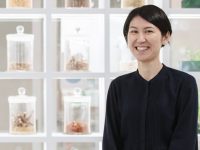
#4
2024.01.26
Designing a Comfortable Living: A Kampo Clinic that Simulates the Five Senses
-
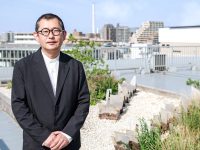
#5
2024.02.09
Creating Cities of Coexistence: Transitional Landscapes with the Tapestry of Diverse Lives
-
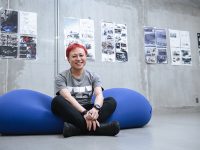
#6
2024.02.26
Designing Mobility: A Gentle Force in Linking People and Society
-
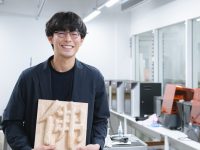
#7
2024.03.29
Touchable Buddha Project: Bridging Heritage and 3D Technology for Community Revitalization through Design
Recommend
-

Unlocking Untapped Urban Resources: Driving Carbon Neutrality through Life Cycle Assessment
2023.06.29
-

CUTICULA: A Secret of Unique Body Shape of Insects −Exploring the Sophisticated Mechanism Behind their Elongated and Round Bodies
2023.12.11
-

A Day in the Life of a Sports DoctorProfessionals behind the world’s most prominent sporting events
2023.04.13




